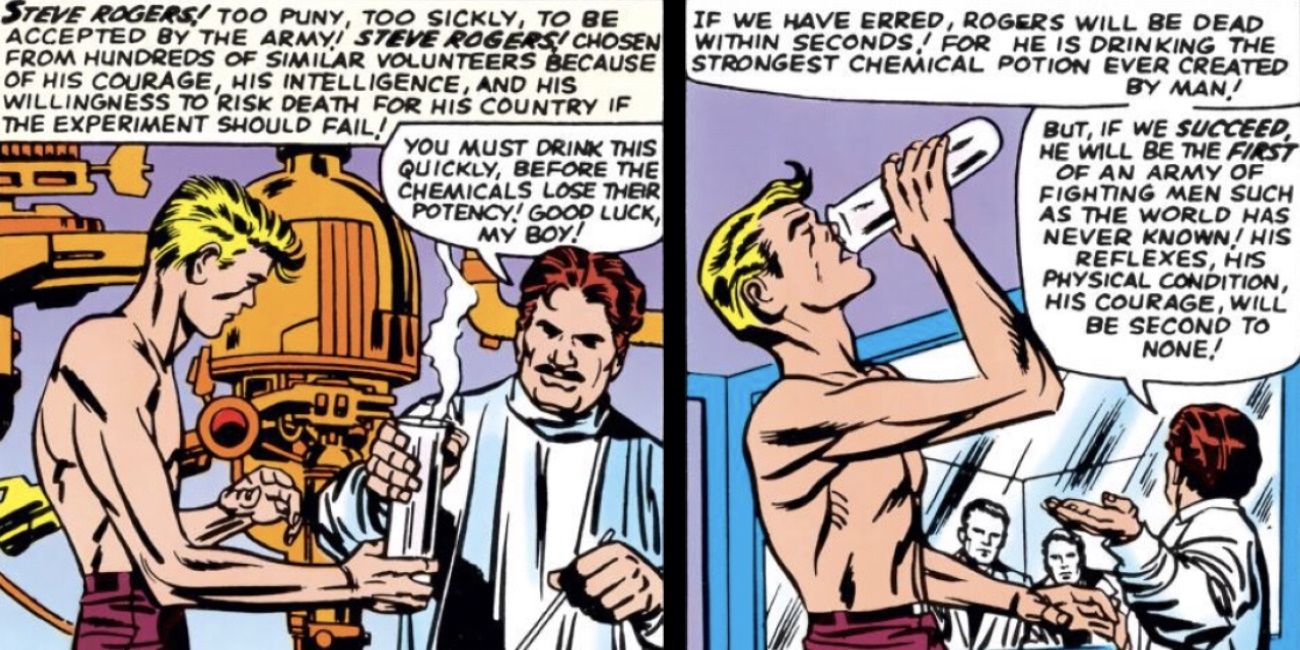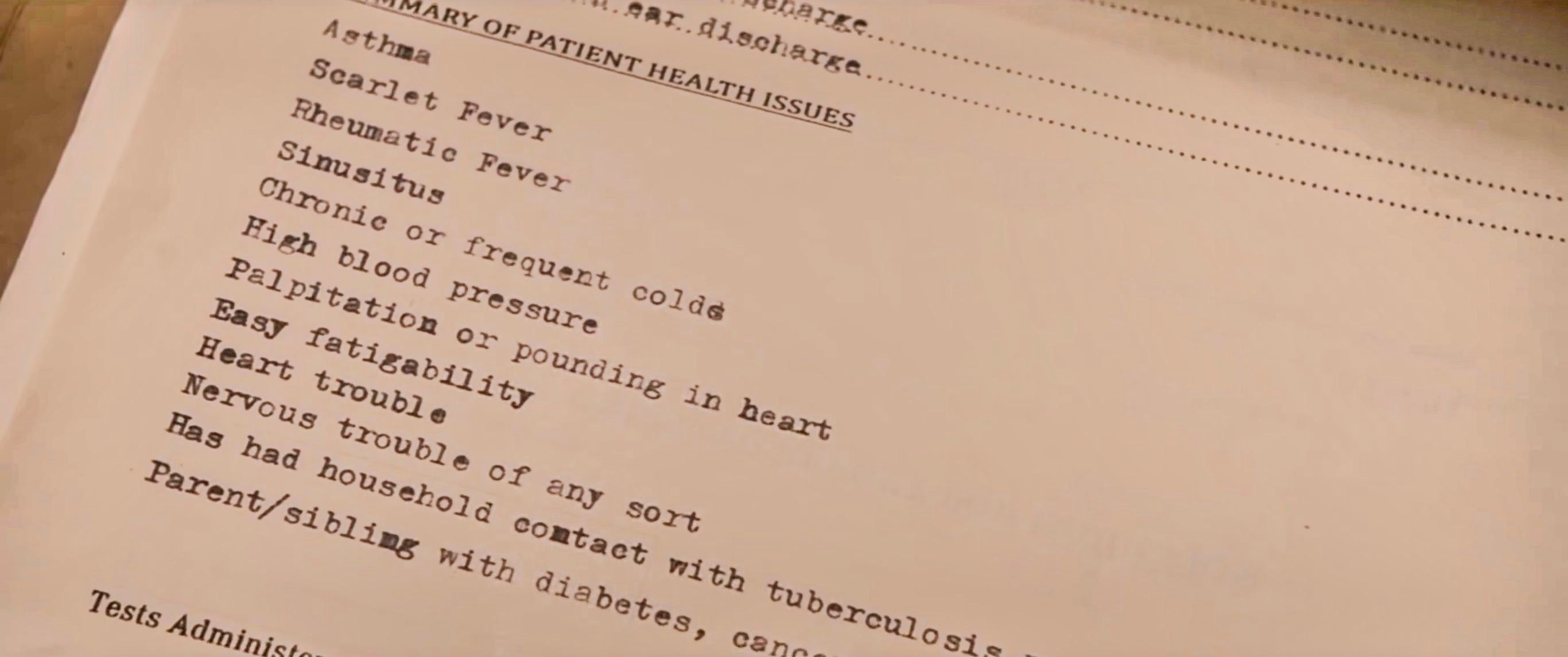Many superheroes come from humble beginnings, but few come from beginnings as humble as Captain America, AKA Steve Rogers. Prior to being biologically enhanced through a combination of super soldier serum and muscle-enhancing Vita-Rays, Rogers was deemed too weak to join World War II. Sure, the pint-sized private Steve Rogers took a huge risk when he agreed to be a lab rat for the US military... but not taking the treatment likely would have resulted in a relatively early death all the same.
The laundry list of early potentially life-threatening illnesses listed on Steve Rogers’s “summary of patient health issues” form glimpsed in Captain America: The First Avenger keep with the comics, ranging from cardiovascular problems, prior infections reducing life expectancy, and chronic conditions. It leads the medical examiner in the film’s first act to stamp a big “4F” on Steve’s form -- which in military terms means a draftee is rejected for being physically unfit -- but just how many years would Steve actually have lived if he wasn't saved by Dr. Erskine's formula?
The first major health problem on Steve’s medical examination is asthma, a condition that narrows the airways through swelling and excess mucus production. This alone would be enough to make him ineligible to serve in the military. Though many people with asthma in today’s modern society still live full and active lives, back in the early 1940s the respiratory condition could be fatal, especially when paired with certain heart conditions.
While 21st century inhalers are easy to use and serve as a quick remedy during an asthma attack, World War II era inhalers were clunky and nowhere near as efficient. This was due in part to much of the medical community believing that asthma was mostly a psychosomatic condition, brought on by the patient’s imagination. Ironically, 'asthma cigarettes' were a viable option for asthma sufferers during Captain America’s time.
Asthma would be a difficult condition for Rogers to overcome, but that alone wouldn’t necessarily lower his overall life expectancy. But having asthma can double the risks of heart attacks and strokes, both of which Rogers was already prone to, according to his medical exam. Much of this risk would be brought on by asthma controller medication, which Rogers would have inevitably been on had he not received the super-soldier treatment courtesy of Uncle Sam.
Further adding to pre-serum Steve’s cardiovascular woes is a previous run-in with scarlet fever, a bacterial infection most commonly afflicting children between the ages of 5 and 15. Scarlet fever is considered less dangerous today, but was a serious illness back in Cap’s early days. Typically brought on by strep throat, the infection can cause major long-term health complications such as throat abscesses, kidney disease, and rheumatic fever.
Speaking of Rheumatic fever, this potentially fatal disease made it to number 3 on Steve’s medical issue list. Rheumatic fever occurs when scarlet fever is not treated properly, and can affect the heart, joints, brain, and skin. More than half of people who are diagnosed with rheumatic fever suffer scarring of their heart’s valves due to tissue swelling. This would (again) greatly complicate Steve’s heart troubles.
On top of asthma, Steve suffered from a buffet of other breathing problems as well, including sinusitis (spelled sinusitus in The First Avenger), chronic or frequent colds, and "household contact with tuberculosis." Sinusitis is an inflammation of the tissue lining of the sinuses typically caused by the common cold, and is rarely a serious condition. Tuberculosis, on the other hand, would have been a major problem for Steve Rogers in 1940s America. TB was one of the leading causes of death in the US during the first half of the 20th century.
During his medical exam, Steve Rogers admits his mother Sarah was a nurse in a TB ward who “got it; couldn’t shake it.” Though people can be genetically predisposed to tuberculosis, his mother catching the disease in no way means Cap also suffered from it. Unfortunately, the sentiment back in the early half of the 1900s was that tuberculosis was exclusively tied to genetics—meaning that if you died from the disease it was due to “inferior genes.” This fallacy was disproven in 1882, but it didn’t stop the general public from discriminating against both TB survivors and their family members. In fact, some states even added tuberculosis to the eugenic defects that could disqualify couples from marrying.
It historically makes sense that the military would include “household contact with tuberculosis” as a reason to reject Rogers as a draftee, since it fits with the cultural biases of the times. Likely, his mother’s death from TB greatly affected young Steve’s quality of life back in the 30s and 40s. Though not a physical ailment, it could still hinder his ability to receive decent medical care as well as gain access to systemic privileges otherwise afforded to White men of the era.
Cap’s early predisposition to fatigability, high blood pressure, and "nervous trouble of any sort" seems obvious when you factor in his many health problems. The fact that Rogers would regularly get into fist fights with neighborhood bullies is honestly astonishing considering how many cardiovascular and respiratory problems in his medical file. Add in his family history of diabetes, cancer, stroke, or heart attack and it becomes a safe bet that Steve Rogers likely wouldn’t have made it to his retirement years had he not soaked in experimental 1940s Vita-Rays and become one of Marvel's strongest super-soldiers.
Even without the mighty power of Captain America, Steve Rogers was an inspiring man. His medical history suggests he was hit with a series of respiratory diseases as a young child that also affected his cardiovascular system. This, combined with his mother’s death by tuberculosis, would label Steve as “genetically inferior” among his ableist peers in 1940s America. It makes sense that Rogers would feel a constant need to prove himself to a world that disregarded his strengths and only looked at his many physical ailments. Taking a potentially lethal super-soldier serum was risky, but considering the layers of potentially fatal illnesses Steve Rogers previously suffered, it was a risk with high reward.




